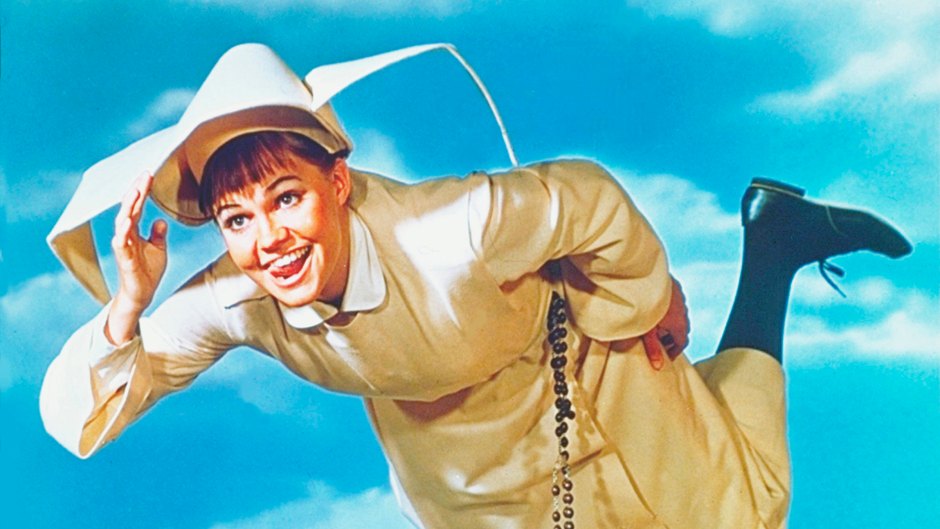
Getty Images
Sally Field Reflects on Her Days as ‘The Flying Nun’ — and She Hated Every Second of It
Don’t let any of the smiling images fool you: Sally Field was not happy portraying Sister Bertrille for three seasons on the Classic TV show The Flying Nun, no matter how many people watched and loved it. In fact, she felt coerced into doing it by Bewitched producer Harry Ackerman and her stepfather, a former Hollywood stuntman turned TV performer.
“I was now turning 19,” Sally reflected to the Television Academy Foundation, “and I didn’t want to be a nun. I did not want to do this; I’d started to see these other dreams of what I really wanted to be. I felt I needed to have faith, have courage and go after something nebulous, because I had no clear vision of how you went towards these things.”
To see the whole story, please scroll down.
Be sure to check out and subscribe to our Classic TV & Film Podcast for interviews with your favorite stars!
1 of 6

Getty Images
Wanting to Kick the Habit
In the end, after people were warning her that an actor never really knew where the next job would come from, she signed for the show which ran from 1967-70. “And from the minute I decided to do that, something in me just curled up in a ball and wept,” Sally reflected, “because I didn’t want to do this.”
Born November 6, 1946, in Pasadena, California, Sally got her television start on 1965’s Gidget, for which her character was described as a “boy-crazy surfer girl.” The show only ran a single season due to low ratings, but boomed during summer reruns, resulting in ABC desperately trying to find another vehicle for her. This resulted in The Flying Nun. As far as she was concerned, they should have tried harder.
Sally does have a point in the sense that the premise of the show is dopey. She plays Elsie Ethrington, who has broken up with her boyfriend of eight months and decided to become a nun, drawn to the Convento San Tanco in San Juan, Puerto Rico, after being impressed by their missionary work. So far, so good. But after putting on her habit, the heavily starched cornette that was the headpiece she wore, apparently became aerodynamic from a perfect storm of its design and the now-named Sister Bertrille’s low weight of under 90 pounds. Her misadventures always threatened to embarrass the church, but somehow she managed to save the day each and every time. Ah, the beauty of ’60s television.
2 of 6

Getty Images
“The show just made no sense to me,” she emphasized. “It was just drivel. And people, when they hear me talk like that, they get very angry. You know, ‘I grew up with that, I loved it.’ Well, God bless you for that, but it was still drivel and nonsense. There wasn’t any piece of it that had human behavior in it. Harry Ackerman said they could all sense I was terribly unhappy. At one point I think I gained a lot of weight, but it was the typical things that being 19, 20, 21 brought with it.
3 of 6

Getty Images
“And the drug culture was coming up. They were scared to death that I was going to turn out to be some sort of junkie in the corner or smoking dope or doing God knows what that everybody else was doing,” she added. “Why shouldn’t I? But I was never really into that. Over that lunch with Harry, I told him I’d just be happy if every once in a while, every fifth episode, there would be one scene that was about human beings talking to each other about something that humans beings actually talk to each other about. And Harry said to me something that I never forgot: ‘People don’t want to see that. When they tune in each week, they want to know what they’re going to see before they see it. They don’t want to be touched. They don’t want to be surprised. They don’t want to think.’ But I don’t believe that; that was a ’50s type of mentality of situation comedy.”
4 of 6

Getty Images
A Silly Premise That Connected With the Audience
Asked to sum up the premise of the show, she commented that Sister Bertrille would fly, plus, being a bit of a renegade, she would get in trouble and make the Mother Superior angry. “And then,” noted Sally, “there was a playboy named Carlos Ramirez, who was a millionaire who owned a casino, representing sinful behavior. Sister Bertrille was always in his hair, making him do good even though he really wanted to do bad. And that was it. That was it.”
5 of 6

Photo Archives/Walt Disney Television via Getty Images
Yet there was definitely something about it which connected with viewers, which she feels was the religious aspect of the show that “people really tuned in to, because this country has a very large religious community, obviously. They tuned in because they wanted to see something that they thought was wholesome and had a Christian aspect to it. And as awful as I thought I was, there was some raw energy that I had then that appealed to people my age. But it couldn’t last. We were in 1967, 1968 and 1969. My generation was exploding. The world was changing. Vietnam was a very big deal, and The Flying Nun was at odds with what my generation was doing. I wasn’t political then, but it was beginning. It was the time of Woodstock and dropping acid and the love generation was in high gear, and I wasn’t part of it. I felt very ostracized and spit upon by my generation, by the people who I wanted to be part of. I was considered part of the establishment and a repulsive part of it. Organized religion was being thrown out. The show stopped because it was time for it to stop. It had no place to go. It never had any place to go. I don’t know how many times you can jump up and down in place without digging yourself a deep, deep hole.”
6 of 6

Getty Images
Moving On and Finding Her Inner Strength
It was, she said, a very hard and confusing time for her, especially when she had to fight against typecasting. But nobody should cry for Sally’s unhappiness over The Flying Nun: she would receive acclaim in the 1976 TV movie Sybil and score the Academy Award for her starring role in Norma Rae, launching her career in a whole other direction. It’s a success she actually credits Lee Strasberg and The Actor’s Studio for, his training being exactly what she needed.
“I started to get some strength that I didn’t have before,” she closed. “He could be devastating to people, but he was so important to me. He was definitely hard on me, but he did it at the right time. It was a way to shake me up enough to not get comfortable, even behind just the little bit of progress I’d made or confidence I had in my acting.”








































